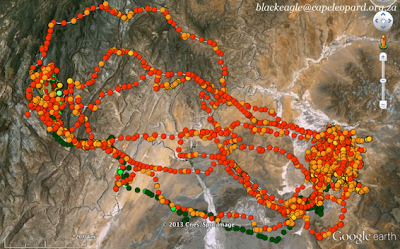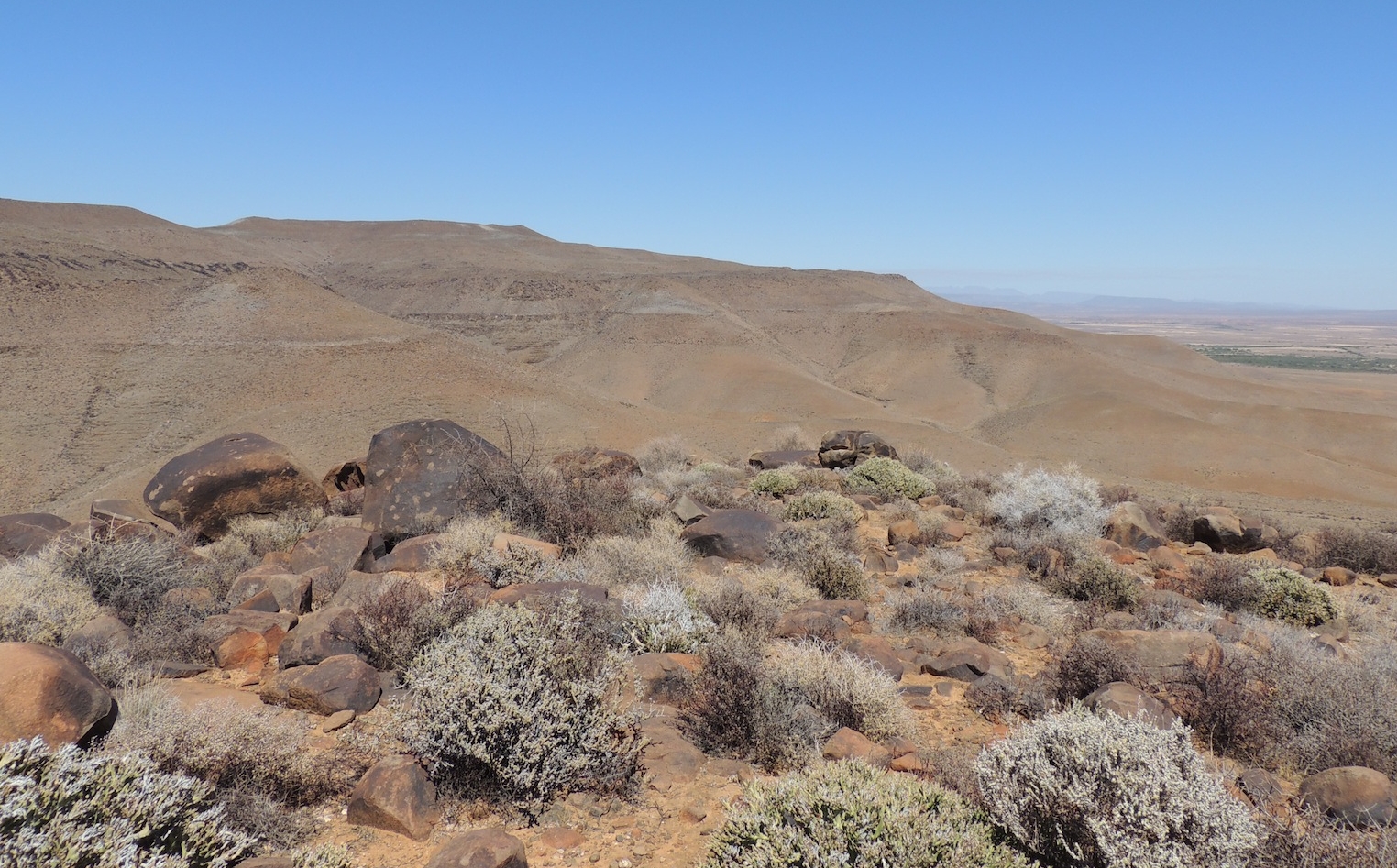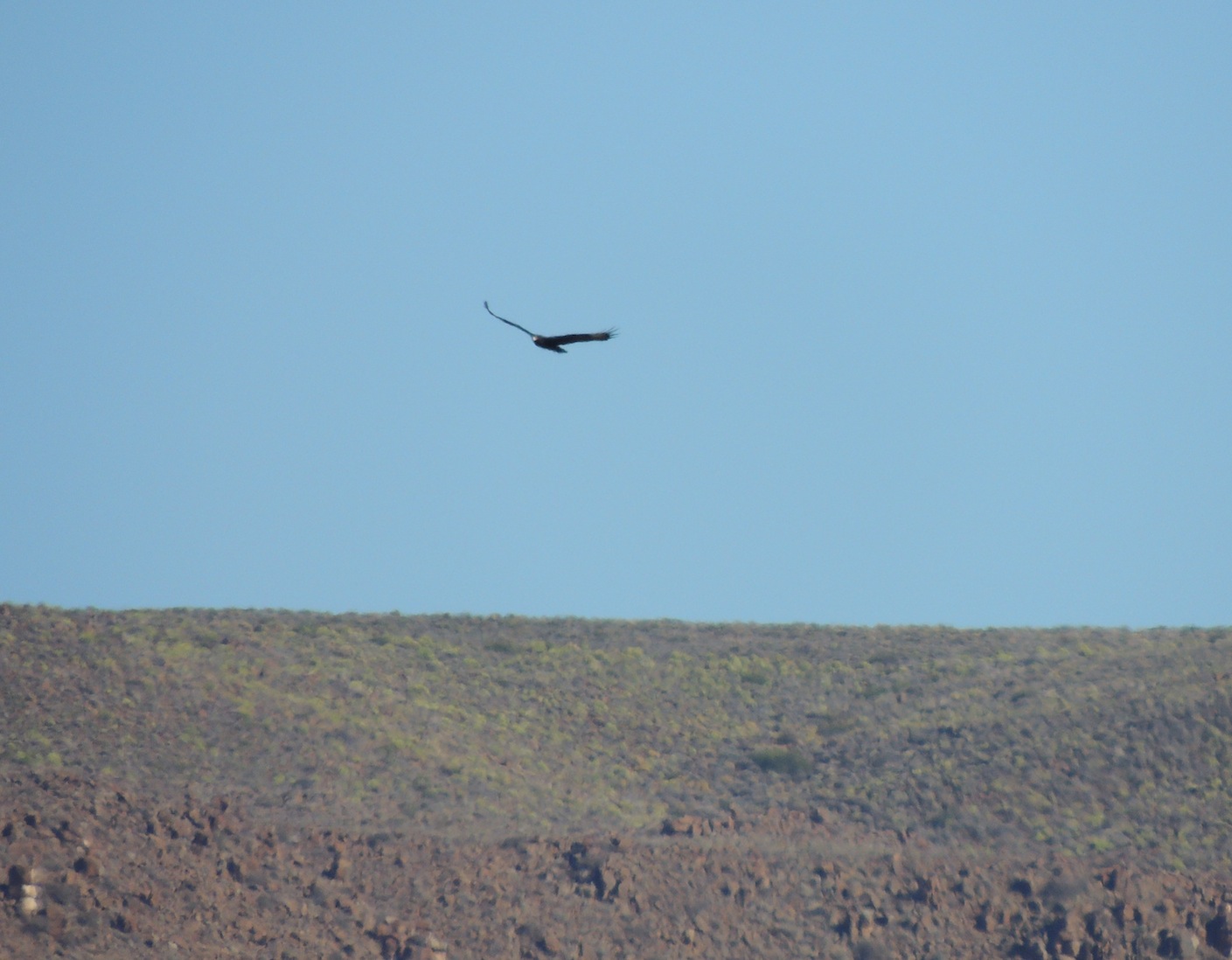To the Karoo and back: Mate replacement & GPS tracking study of an ousted eagle
Monday, March 25th, 2013
Species: Verreaux's Eagle
On April 6th 2012 in the Western Cape Province of South Africa we fitted the first Verreaux’s Eagle with a UvA-BiTS GPS device. I (Megan Murgatroyd of the Animal Demography Unit, University of Cape Town) had been monitoring this pioneering eagle since 2011 when he and his mate bred successfully. After mounting the device on the eagle, we observed two adult eagles in the vicinity of the male’s nest while carrying out fieldwork on 13th May 2012. They were first observed at 14:09. They were seen flying and perching together and hence appeared to be a “pair”. However, the GPS tag we had fitted on the male was no longer visible. The last GPS position that was received by the ground network was fixed at 12:44 on the same day. So either the tag fell off and this was the same pair or the tagged eagle was replaced by an untagged male, with the re-pairing occurring in less than 85 minutes of the previous male leaving the territory, which seemed impossible…
The Verreaux’s Eagle is commonly thought to be monogamous with a pair bond that probably lasts for years (Gargett 1990, Steyn 1982) and adults are reported to show a strong fidelity to their breeding territory (Gargett 1990). Territorial behavior occurs usually when a single intruding adult imposes upon the territory of a resident pair. This is displayed as descending aerial cartwheels with the feet of opposing individuals clasped, only releasing grip shortly before reaching the ground (pers. obs., Gargett 1990, Simmons & Mendelsohn 1993). It is not known whether or not these conflicts often result in injuries or fatalities but my observations have always ended with the resident pair chasing away the intruding bird.
The true story was not revealed until five months later when the GPS device came back into contact with the ground network which was functioning in a neighboring area of the Cederberg to download data from another tagged eagle. The eagle had left the territory rapidly after 12:44 on the 13th May 2012 and subsequent GPS fixes had been stored in the mounted device until a network connection was reestablished.
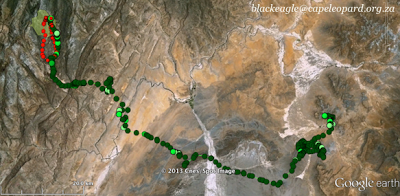
Figure 1: GPS points from last movements within territory (red) and first journey away (green) until last position on 15th May 2013 at 12:56. Approximate prior home range shaded.
The initial return this eagle made to the ground station network was brief, therefore only two days of data was downloaded before the individual again left the network area (Figure 1). However, three weeks later the eagle returned again and a second download was made.
So we now know, after being ousted from its territory the eagle initially covered 110 km in the first two days (Figure 1) and then appears to have taken up a new ‘base’ 75 km away from its former territory. The data collected shows a massive expansion of the area used by this eagle following displacement (Figure 2). It also showed three return trips to and from the Cederberg up to the June 27th, but only once did it actually pass over the kloof (ravine) where the former nest site is. It remains to be seen if this eagle will re-pair. During the 2012 breeding season the newly formed pair did not breed. Mate changes of Verreaux’s Eagles probably occur more frequently than we are currently able to observe, and this data supports the idea that re-pairing is so rapid that it is difficult to detect without intensive and frequent monitoring.
In February I followed this eagle’s path to the Karoo region and back with the mobile UvA-BiTS data download system. The area where he was last known to be was so inhospitably dry and hot that it seemed like a place of little or no life. So on the two occasions when a Verreaux’s Eagle was actually spotted, I was extremely surprised and enthusiastic. However, both times were false alarms and after I spent four days looking for him with no luck I returned home. I cannot conclusively say where he is now – perhaps he is still there but is a typically elusive Verreaux’s eagle, or perhaps he has found a new breeding site too. I will follow up with another trip to the Karoo and I only hope that one day we will hear from him again to find out the ending of this story.
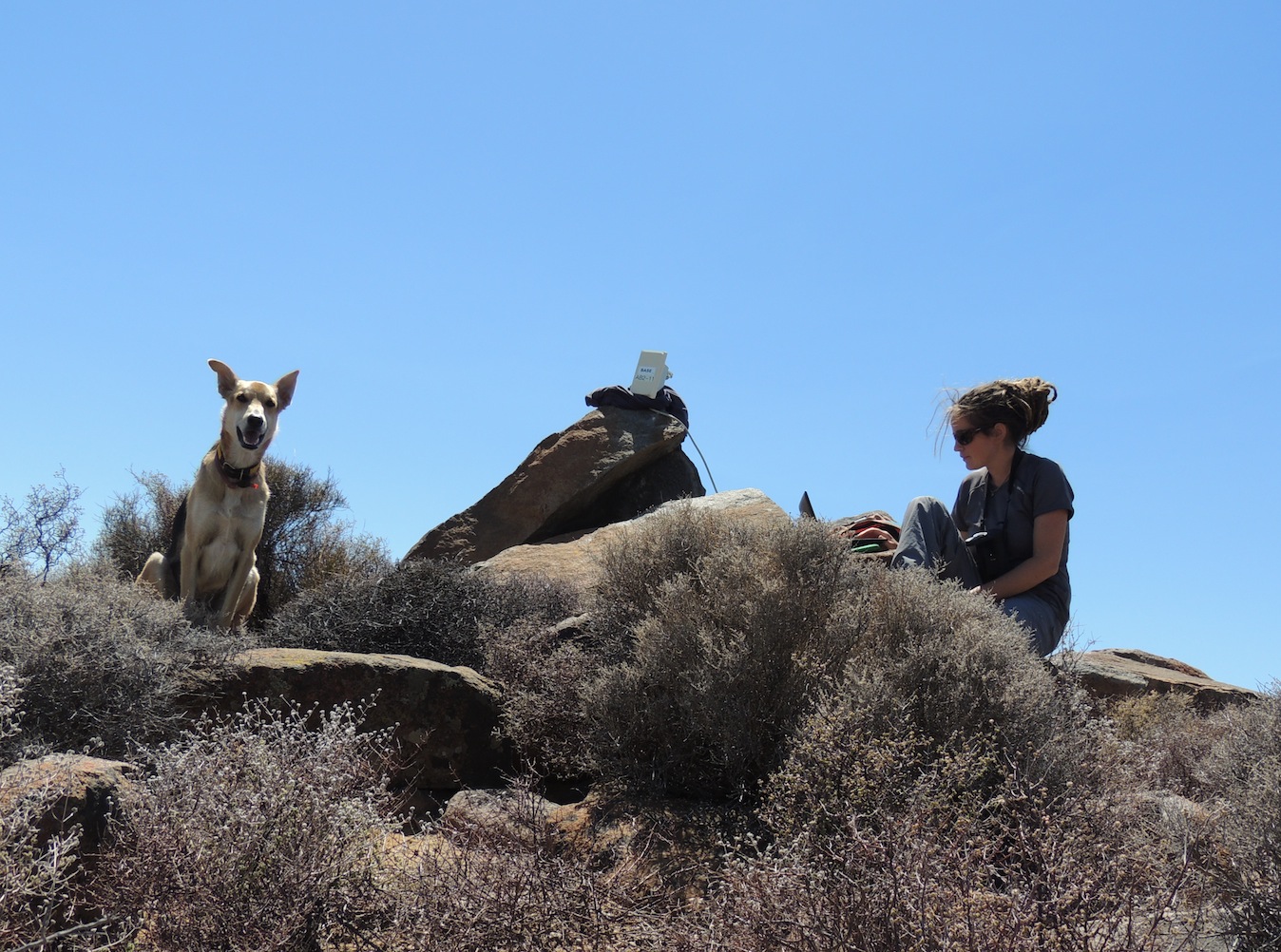
The “team” searching for the GPS tag with the UVA-BiTS base station.
.
References
Gargett, V. 1990. The Black Eagle, A Study. Acorn Books, South Africa.
Simmons, R.E. & Mendelsohn, J.M. 1993. A critical review of cartwheeling flights of raptors. Ostrich 64: 13-24.
Steyn, P. 1982. Birds of Prey of Southern Africa. David Philip, Cape Town.
Latest Highlights

Overwintering and foraging areas used by a 24-year old Eurasian spoonbill
Wednesday, April 18th, 2018

Lesser Black-backed Gulls from Schiermonnikoog enjoy their winter holiday
Tuesday, April 3rd, 2018

Oystercatchers returning from inland breeding grounds
Sunday, July 23rd, 2017

GPS tracker with SMS messaging
Monday, November 2nd, 2015

Ronny found back, three years after deployment of the UvA-BiTS GPS-tracker
Wednesday, July 8th, 2015

Lesser Black-backed Gulls feed on potato crisps in Moeskroen
Wednesday, November 13th, 2013

‘Vogel het uit!’ has won the 2013 Academic Year Prize
Tuesday, November 5th, 2013

Back in Europe: UvA-BiTS Honey Buzzard photographed at the Strait of Gibraltar
Wednesday, May 15th, 2013

UvA-BiTS database passes 10 million record mark
Wednesday, May 8th, 2013

Gulls pouring into the Kelderhuispolder colony
Wednesday, April 17th, 2013

To the Karoo and back: Mate replacement & GPS tracking study of an ousted eagle
Monday, March 25th, 2013

Meeting Montagu’s Harrier Edwin in Senegal
Wednesday, March 20th, 2013

Oystercatchers: Learning how and where to survive
Wednesday, August 29th, 2012

New GPS mini-tracker facilitates investigation into movement of smaller animals
Wednesday, July 4th, 2012

Over 5 million GPS fixes in the UvA-BiTS database
Thursday, June 21st, 2012

Tagged Lesser Black-backed Gulls return to Orford Ness
Wednesday, April 18th, 2012

Gulls spotted in their over-wintering areas
Wednesday, December 21st, 2011

The UK a top vacation destination in 2011
Wednesday, July 13th, 2011

A long way from home
Sunday, June 26th, 2011

Visiting Amsterdam for a day
Saturday, May 14th, 2011

Female deserts brood, male raises chicks
Friday, May 13th, 2011

Wintering range in Sierra Leone
Friday, May 13th, 2011

Camera watches foraging Oystercatchers day and night
Thursday, May 12th, 2011

The return of a bird presumed dead
Wednesday, May 11th, 2011

Texel gulls back from wintering areas
Sunday, May 1st, 2011

First Lesser Black-backed Gull returns to the breeding colony
Monday, April 13th, 2009


